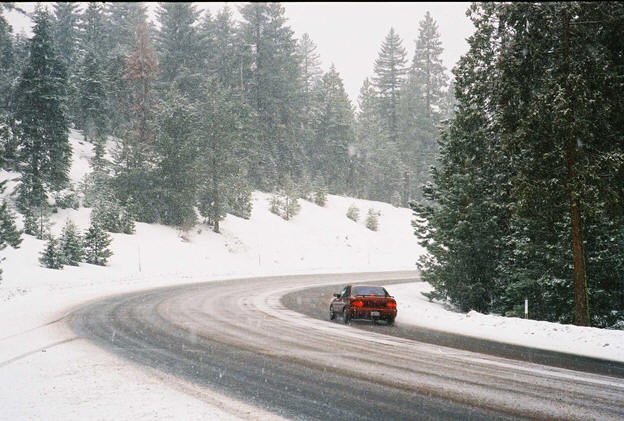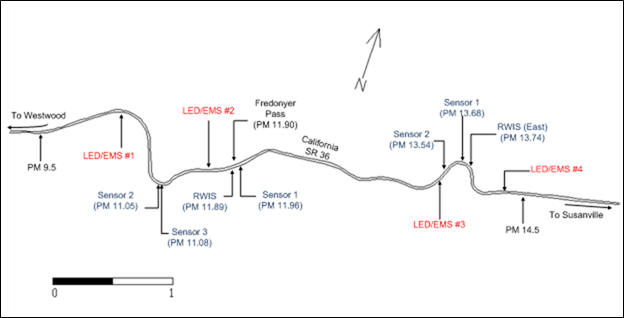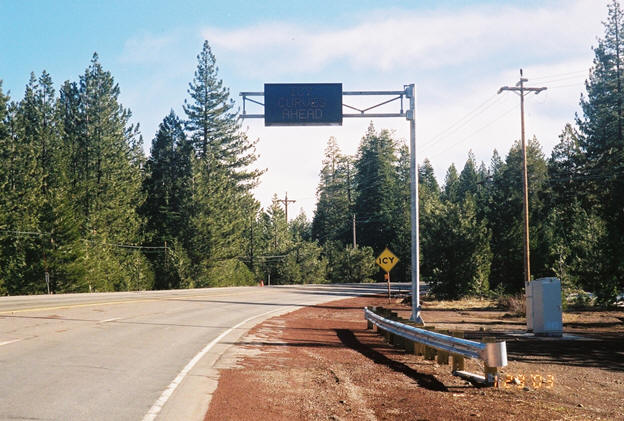UPDATE: Thursday, October 20th, 2011

Photo by Chris Strong
The Fredonyer Pass Icy Curve Warning System (ICWS) was deployed by Caltrans to increase motorist vigilance and reduce the number of crashes occurring during icy pavement conditions in real-time. The ICWS consists of pavement sensors to detect icy conditions, in combination with dynamically activated signage to provide motorists with real-time warning when icy conditions are either imminent or present. The system is intended to alert motorists of icy conditions, eliciting a decrease in vehicle speeds during such conditions. Consequently, lower vehicle speeds are expected to translate to reduced crashes along the length of the curves which have presented safety challenges in the past. The schematic below shows how the system is laid out along the roadway.

Based on the results of this work, a number of conclusions have been drawn. First, the statistical analysis of speed data suggested that the system is working as intended and that vehicle speeds are significantly lower. This was particularly true of speed during clear, cold and dry weather conditions, when a driver would not necessarily expect to encounter ice. Mean speed differences exceeding 3 mph were observed during such conditions during both the day and at night at a majority of sites. However, only a limited number of mean speed differences were found to be greater than 5 mph. Second, the evaluation of crash data before and after system deployment found that the ICWS reduced the number of annual crashes by 18%.

Photo by Chris Strong
Additionally, a crash rate method was used to investigate the effect of the ICWS on crash severities, with a focus on ice-related accidents. Investigation of crash rates indicated that the ICWS provided safety benefits of $1.7 million dollars per winter season during the “after” deployment study period.
Finally, feedback from Caltrans maintenance and ITS forces indicated that the system is an improvement over traditional metal signage and is generally functioning as expected. Such a system does require careful planning prior to deployment and on-going maintenance in order tooperate as expected.
For more information about the Fredonyer Summit Icy Curve Warning System and the evaluation, review the final report here. The final report can also be found on the COATS Phase 4 Documents page.

